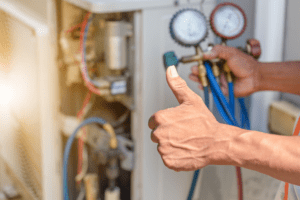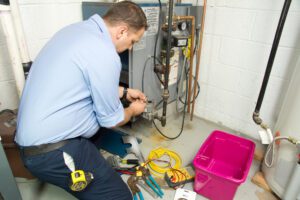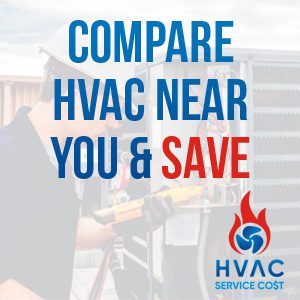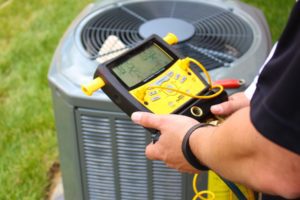
HVAC Repair Costs by Brand: Does Your System Cost More to Fix?
If you’ve ever had to call an HVAC technician for a repair, you’ve probably asked yourself: “Is my system more expensive to fix than others?” As someone who’s been in this industry for over 20 years, I can tell you—brand matters. While many homeowners assume all heating and cooling systems are more or less the same when it comes to repairs, that’s not always the case.
I’m Allen Chambers, a licensed HVAC contractor and master electrician based in Florida. Over the last two decades, I’ve repaired just about every HVAC brand on the market. Some are simple and inexpensive to service. Others? Not so much. Whether you’re running a high-end variable-speed system or a reliable builder-grade unit, this guide will help you understand how brand impacts repair costs—and what that means for your long-term budget.
Why Brand Affects Repair Costs
The brand of your HVAC system can influence repair pricing in several ways. Some systems use proprietary parts, which are more expensive and harder to source. Others are engineered more simply, making service quicker and less labor-intensive. And then there are premium brands that carry higher price tags not just for their performance, but also for the cost of maintenance and specialized training.
In my experience, three factors drive up the cost of brand-specific repairs:
-
Part availability
-
Proprietary components
-
Technician certification requirements
If your brand requires factory-trained technicians or has limited parts distribution, you may pay more—and wait longer—for repairs.

Common HVAC Brands and How They Stack Up
Let’s take a look at some of the most popular brands and how their repair costs generally compare in the field.
Trane
Average repair cost: Moderate to high
Trane systems are built to last and offer excellent energy efficiency, but they also use proprietary parts that often need to be ordered directly from the manufacturer. This can lead to longer wait times and higher costs, especially for control boards and variable-speed motors.
Carrier
Average repair cost: Moderate
Carrier is another premium brand with a solid reputation. Their parts are typically easier to source than Trane’s, but many models still use brand-specific components. That said, repairs are usually manageable with a certified technician.
Lennox
Average repair cost: High
Lennox systems are known for innovation—but that often comes at a price. They frequently use custom-engineered parts, which makes repairs trickier and more expensive. Many Lennox units also require a Lennox-certified contractor to perform certain repairs.
Goodman
Average repair cost: Low to moderate
Goodman systems are more contractor-friendly and widely used in budget-conscious installations. Replacement parts are generally easy to find, and most HVAC techs are familiar with the systems. If you’re looking for lower repair costs, Goodman is a strong contender.
Rheem/Ruud
Average repair cost: Moderate
These sister brands are reliable and fairly easy to service. Parts are widely available, and their designs don’t usually involve overly complex diagnostics or repairs. Expect average costs unless your unit uses advanced inverter technology.
Amana
Average repair cost: Moderate to high
Amana, owned by the same parent company as Goodman, shares some design similarities—but the higher-end models come with more advanced features and sometimes higher repair costs due to specific compressor or control board components.
York
Average repair cost: Moderate
York units are relatively affordable to fix, though older models can be more challenging due to discontinued parts. Newer models are straightforward and parts are accessible through most major suppliers.

Real-World Repair Price Ranges by Brand
To give you a general idea, here’s what typical repairs might cost depending on brand and part type:
| Repair Type | Trane | Carrier | Lennox | Goodman | Rheem |
|---|---|---|---|---|---|
| Capacitor Replacement | $200–$300 | $150–$250 | $200–$350 | $120–$200 | $150–$250 |
| Control Board Replacement | $500–$750 | $400–$700 | $600–$900 | $300–$500 | $350–$600 |
| Blower Motor Replacement | $600–$900 | $500–$850 | $700–$1,000 | $400–$700 | $500–$800 |
| Refrigerant Recharge | $300–$600 | $300–$600 | $300–$700 | $250–$500 | $300–$550 |
| Compressor Replacement | $1,500–$2,500 | $1,300–$2,200 | $1,700–$3,000 | $1,000–$1,800 | $1,200–$2,000 |
Note: Prices vary by region, system type, and whether it’s under warranty.
The Role of Warranties in Repair Cost
Brand warranties can dramatically reduce your out-of-pocket costs—if they’re still valid and you’re working with an authorized dealer. Some brands offer:
-
10-year parts warranties (standard for Goodman, Trane, Lennox, etc.)
-
Limited lifetime warranties on specific components (like Amana compressors)
-
Labor warranties only when installed by certified contractors
Always confirm whether your HVAC system is registered and under warranty before authorizing major repairs. I’ve saved clients thousands just by helping them check their coverage.

Should You Choose a Brand Based on Future Repair Costs?
It depends. If you’re buying a new system and repair affordability is your top concern, brands like Goodman or Rheem are generally easier and cheaper to maintain. If you’re more focused on energy efficiency, smart features, or longer lifespan, then Trane, Carrier, or Lennox might be a better fit—but with higher potential repair costs down the road.
For homeowners in Florida (where I work), I often recommend balancing coastal durability with serviceability. Salt air and humidity are tough on HVAC systems, so part availability and service access can matter just as much as SEER ratings.
How Part Availability and Technician Experience Affect Repair Time and Cost
One factor homeowners rarely consider—but that can significantly impact repair pricing—is how readily available replacement parts are and whether qualified technicians are familiar with your brand.
Limited-Part Brands Mean Longer Waits
Some high-end or less common brands don’t have widely distributed parts networks. If your HVAC system uses proprietary components or is part of a newer product line, your technician might need to special order the part from the manufacturer. That can increase both the wait time and the overall cost, especially if expedited shipping is required or if there’s a backlog on popular items like blower motors or control boards.
For example, I’ve had clients with European or specialized ductless systems who waited up to two weeks for a replacement part—not because the repair was complex, but because the part just wasn’t stocked locally.

Technicians Aren’t Trained on Every Brand
Even licensed HVAC techs don’t have equal experience with every system. Some brands—like Lennox, Trane, or Mitsubishi—require brand-specific certifications or training to service advanced models properly. That means you’ll either need to find a technician certified in that brand (which could cost more) or risk hiring someone unfamiliar with the system’s intricacies.
In contrast, brands like Goodman or Rheem are well-known for their ease of servicing, and most technicians are trained to handle common issues without special tools or diagnostics equipment. This is especially important to think about if you live in a rural area or smaller town, where the local HVAC pros might not have access to brand-certified training or inventory support.
Brand absolutely plays a role in how much you’ll spend on HVAC repairs over time. While a high-end system may give you greater comfort or efficiency, it may also cost more to fix when something goes wrong. That’s why it’s important to understand your system, register your warranty, and work with a licensed contractor who knows the ins and outs of your specific brand.
If you’re facing a repair and wondering whether the price is reasonable for your unit—or if it’s time to replace it altogether—I’d be glad to help walk you through the numbers.
Written by Allen Chambers, a master electrician and licensed HVAC contractor with over 20 years of experience. I specialize in energy-efficient HVAC installations, smart technology integrations, and high-performance solutions for homes across Florida. As a contributor to HVAC Service Cost, I help homeowners make smart, cost-effective decisions about heating, cooling, and energy use.




Leave a Reply